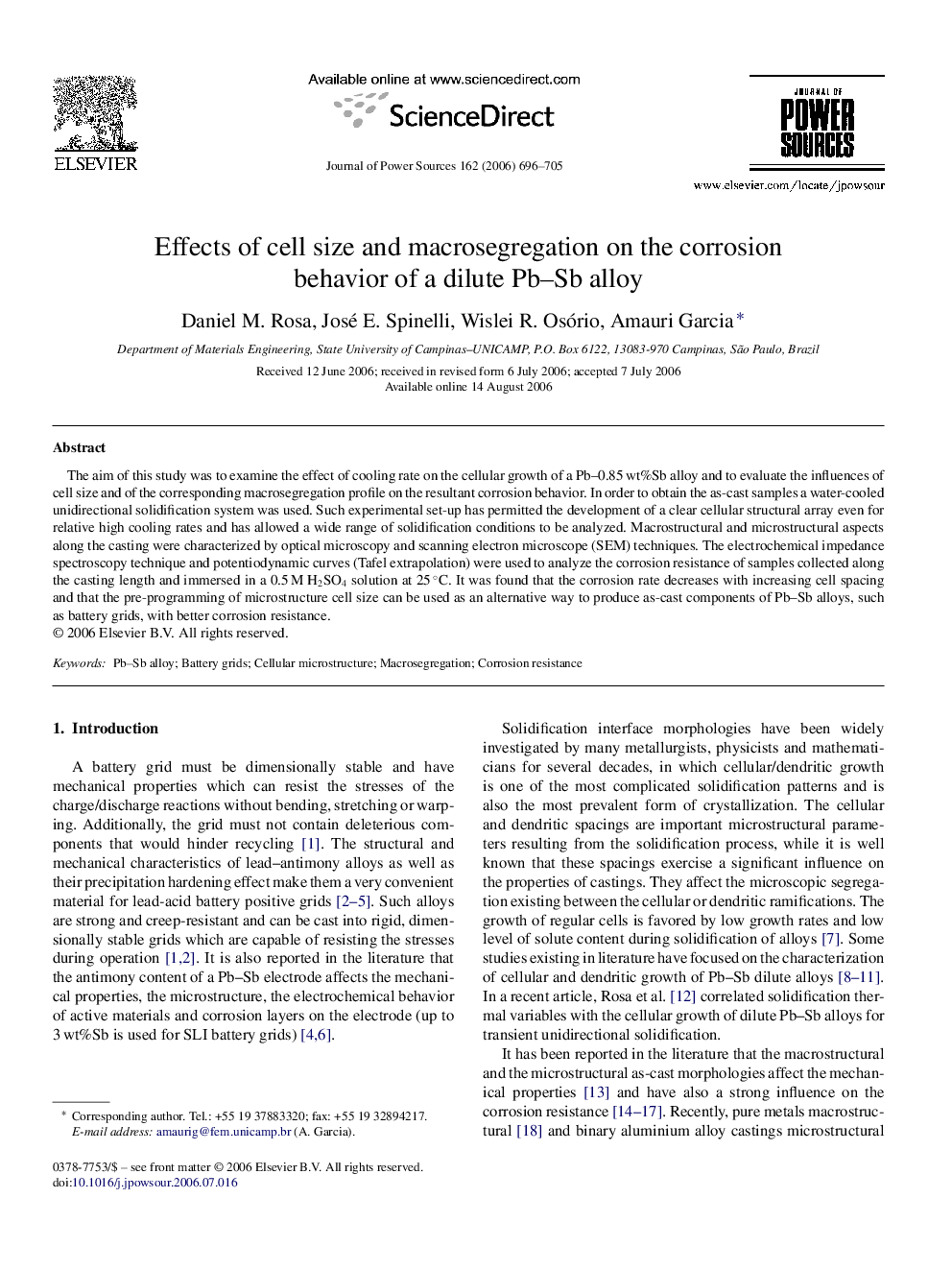| Article ID | Journal | Published Year | Pages | File Type |
|---|---|---|---|---|
| 1291899 | Journal of Power Sources | 2006 | 10 Pages |
The aim of this study was to examine the effect of cooling rate on the cellular growth of a Pb–0.85 wt%Sb alloy and to evaluate the influences of cell size and of the corresponding macrosegregation profile on the resultant corrosion behavior. In order to obtain the as-cast samples a water-cooled unidirectional solidification system was used. Such experimental set-up has permitted the development of a clear cellular structural array even for relative high cooling rates and has allowed a wide range of solidification conditions to be analyzed. Macrostructural and microstructural aspects along the casting were characterized by optical microscopy and scanning electron microscope (SEM) techniques. The electrochemical impedance spectroscopy technique and potentiodynamic curves (Tafel extrapolation) were used to analyze the corrosion resistance of samples collected along the casting length and immersed in a 0.5 M H2SO4 solution at 25 °C. It was found that the corrosion rate decreases with increasing cell spacing and that the pre-programming of microstructure cell size can be used as an alternative way to produce as-cast components of Pb–Sb alloys, such as battery grids, with better corrosion resistance.
